Tag Archive: Driving safety
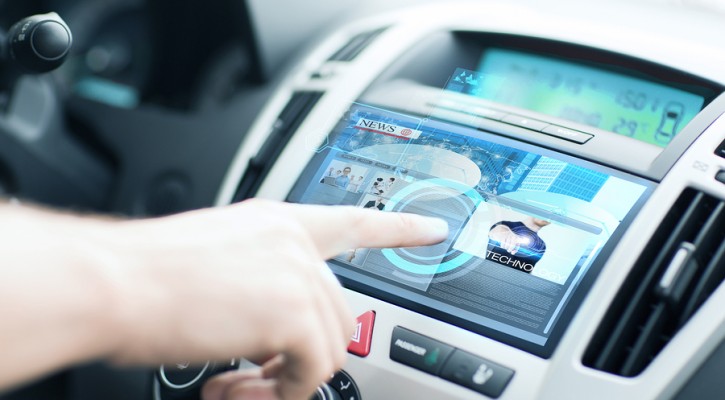
Drivers Prefer Collision Avoidance Over Wireless Technologies
April 29, 2015
A study published last week By J.D. Power shows that consumers prefer collision avoidance technology over wireless connectivity in their automobiles. At a time when auto manufacturers seem to be rushing to add more and more distracting wireless technologies to their new vehicles, this study comes as a welcome bit of news to driving safety advocates.
The J.D. Power 2015 U.S. Tech Choice Study showed that the top three out of five technologies consumers wanted in their next vehicle are collision avoidance technologies. The top three choices are:
- Blind spot detection and prevention systems,
- Night vision, and
- Enhanced collision mitigation systems.
According to J.D. Power, consumers are showing more acceptance of self-driving vehicles and the top three technologies that consumers prefer are the building blocks for eventual fully autonomous vehicles.
The study showed that the last two preferences on the top five are camera rearview mirrors, a driver assistance aid, and self-healing paint which falls into the “comfort and convenience category.”
Choices between operating systems and wireless carriers are one of the reasons consumers felt less inclined to prefer wireless technologies in new vehicles. Consumers are loyal to either Android or Apple operating systems and their wireless carrier. Consumers are wary about having the automaker choose an operating system for them and, until automakers solve the problem of a one size fits all system, wireless will remain a low priority.
Consumers also showed little enthusiasm for “advanced sensor technologies, such as hand gesture controlled seats, biometric driver sensors, or haptic touch screens.”
Read more: Consumer Preference for Collision Protection Technologies Paves the Way for Autonomous Driving

Could Self Driving Cars Lead To More Car Sickness?
April 20, 2015
Could self driving cars lead to more car sickness? Two researchers, Michael Sivak and Brandon Schoettle of the University of Michigan Transportation Research Institute are suggesting that self driving cars could lead to more car sickness among their riders.
Car sickness is a type of motion sickness caused by a conflict between what the eyes see and what the inner ear is experiencing. When a person is involved in an activity, say reading a book, while the car is in motion, the person’s eyes are telling the brain that he or she isn’t moving; however the signals received from the inner ear’s balance system are telling the brain something quite different. The conflict between these two signals can lead to sickness; most often nausea and vomiting.
That’s why car sickness is most often seen among young children sitting in the back seat of the vehicle. They’re often too small to see out the window and they’re normally involved in other activities such as coloring or reading a book. Their eyes aren’t receiving those signals telling them that they’re in motion but their inner ears are. Many a parent has experienced the frustration of a child, suddenly and with little warning, vomiting all over the back seat. It doesn’t make for a pleasant family trip.
The U-M researchers surveyed 3,200 adults in the U.S. and five other countries and asked what kind of activities they would engage in if they were freed of the responsibility of driving in a self driving vehicle. More than a third said they would engage in activities such as reading, playing a game, or watching a video. Those are just the types of activities that could potentially lead to car sickness.
Without looking at the road and matching the eye’s signals to the signals coming from the inner ear, the researchers predict that anywhere from six to twelve percent of adults could be expected to suffer the effects of car sickness.
Health experts advise that, to prevent car sickness, riders should look out the window and gaze toward the horizon in the direction of travel; doing that will stop that sensory conflict that causes car sickness. For children, along with the obvious safety benefits, another benefit of booster seats is that they help raise the child up to a height where they can more easily look out the window and, hopefully, limit the effects of car sickness.
Read more: Motion sickness in autonomous cars: Don’t read and ride
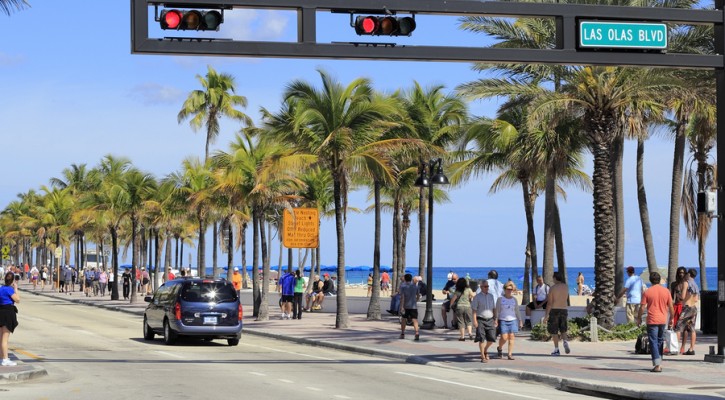
Florida Leads In Pedestrian Deaths
March 4, 2015
Florida continues to be among the deadliest states for pedestrians according to a report from the Governor’s Highway Safety Association (GHSA). The recently released report found that, nationwide, pedestrian deaths were just about the same in 2014 as they were in 2013. However, Florida’s pedestrian deaths continue to rise.
When comparing the preliminary pedestrian death rate for the first six months of 2013 and 2014, Florida led the nation with 292 pedestrian deaths; an increase of 50 deaths over the same six month period in 2013.
Florida is the third most populous state in the nation yet, when looking at the total pedestrian deaths for 2013, Florida, with 501 pedestrian deaths ranked second only behind California’s total of 701. Florida, with only 51 percent of California’s population had a pedestrian death rate equal to more than 71 percent of California’s. When looking at the pedestrian death rate per 100,000 population, Florida takes the lead.
|
State |
Population in millions |
Pedestrian death total |
Per 100,000 population |
|
California |
38.8 |
701 |
1.83 |
|
Texas |
26.9 |
480 |
1.81 |
|
Florida |
19.9 |
501 |
2.56 |
|
New York |
19.7 |
335 |
1.70 |
One might make the claim that the large number of tourists that visit Florida each year might skew the results. That idea might hold up if Florida led the nation in tourism but it doesn’t. California leads the nation in tourism followed by Florida according to a study by HotelsCombined, a hotel booking site.
Clearly Florida and Florida’s drivers are doing something wrong. A 2014 study by the George Washington University School of Business listed Orlando as the most dangerous city in the US for pedestrians and ranked Tampa and Miami among the top ten least walkable cities in America.
Florida cities need to consider walkability as part of their plan when building or improving roadways. Florida drivers need to be more aware of pedestrians, especially in heavily traveled tourist areas. Part of being a good defensive driver is considering what you would do if a pedestrian were to walk out into the roadway.
To read more, visit: http://www.ghsa.org/html/files/pubs/spotlights/spotlight_ped2014.pdf
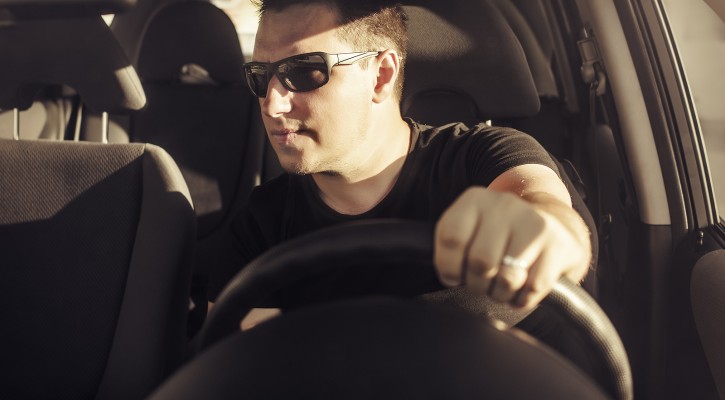
Eye Tracking Device Checks For Driver Attention And Fatigue
February 5, 2015
An eye tracking device that follows a driver’s eye movements could be in your driving future. The device, designed to monitor a driver’s eye movements and warn of inattention or driver fatigue can monitor a driver’s eyes, even through sunglasses.
Similar eye tracking devices have been talked about for quite a few years now but this one seems to have a track record. Developed by a company called Seeing Machines in Australia, their equipment has been used for some time and is currently installed in up to 4,000 delivery vehicles and heavy mining machines. Their use in mining equipment, it is claimed, has led to a 70 percent decrease in driver fatigue and distraction.
For cars, the company has developed a small eye tracking detector designed to fit easily into a car’s dashboard. It’s designed to work in conjunction with advanced driver assistance systems such as automatic braking and lane departure systems. If the system detects that a driver isn’t paying attention to the road or is fatigued, it can give an audible warning or vibrate the seat to bring the driver’s attention back to the road.
The company also sees the systems being used in aircraft cockpits and simulators, and working environments where strict attention to computer and machinery consoles is necessary.
They list Ford, General Motors, and Toyota as partners so it looks as if the auto industry is actively pursuing this technology for future applications in automobiles.
Read more: Eye-Tracking Car Tech Will Help Drivers Remain Focused
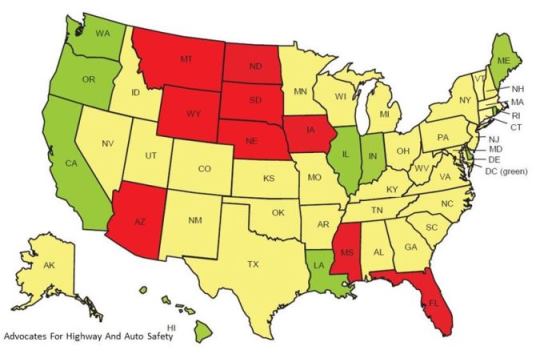
Florida Fails When It Comes To Safe Driving Laws
January 22, 2015
When it comes to safe driving laws, Florida ranks near the bottom compared with other states according to a report published today by Advocates for Highway and Auto Safety (Advocates). The report ranks states based on fifteen basic driving safety laws, giving points for each law a state has on its books.
The report used a three color grading system based on each state’s overall score. Grades given were:
- Green – State is significantly advanced toward adoption of all Advocates’ recommended highway safety laws.
- Yellow – State is advancing but has numerous gaps in its highway safety laws.
- Red – State falls dangerously behind in adoption of key safety laws.
Florida was one of nine states to receive a red score with only six out of the fifteen recommended safe driving laws enacted.
This year’s report stresses what the Advocates call “lethal loopholes” in laws that fail to protect drivers and passengers and contribute to preventable deaths and injuries. Lethal loopholes refer to laws that don’t go far enough to protect vehicle occupants or that are “secondary enforcement laws.” For those unfamiliar with secondary enforcement laws, we need to take a moment to explain how they work.
A good example of a secondary enforcement law in Florida is the new anti-texting law that took effect in October of 2013. The law, which prohibits drivers from writing, sending, or reading written communications on any wireless communications device, sounds like a good law at first glance however, the law is a secondary enforcement law. That means that a law enforcement officer can’t stop a driver and issue a ticket just for texting alone. The officer must first witness a driver texting while, at the same time, violating a primary enforcement law such as speeding or running a red light before stopping the driver and issuing a ticket. As a result, Florida’s anti-texting law is basically toothless and law enforcement agencies throughout the state report that they have issued very few tickets under this law.
When ranking states on whether or not they had one of the fifteen laws on the books, the Advocates didn’t count those laws that were secondary enforcement laws. They also didn’t give points to laws that didn’t go far enough to protect vehicle occupants from injury or death. In Florida’s case, those laws include:
- Florida’s newly enacted child booster seat law that only requires the use of booster seats for children under the age of five. Adult seat belts don’t fit children properly and the Insurance Institute for Highway Safety (IIHS) recommends that children remain in a booster seat until they are at least 4’9” tall. For the average child, that can be anywhere from 9 to 11 years of age. Effective booster seat laws require the use of a booster seat until the child is either 4’9” tall or 9 years of age.
- Florida’s seat belt law is a primary law for occupants of the front seat and anyone under the age of 18 no matter where they are seated. However, it doesn’t require the use of seat belts by back seat occupants over the age of 18.
- Graduated Driver License (GDL) laws are designed to give teen drivers more driving experience without distractions until they have more experience. Effective GDL laws restrict the number of passengers a teen can carry, limit night time driving, and the use of cell phones. Florida’s GDL laws have no restrictions on passengers or the use of cell phones by newly licensed teen drivers. In 2012, Florida came in at third place after Texas and California in the number of highway deaths involving teen drivers.
- Florida’s motorcycle helmet law allows riders over the age of 21 with at least $10,000 worth of medical insurance coverage to ride without a helmet. Florida, with only 47% of the riders using helmets, led the nation in motorcycle deaths in 2012.
For more information on how Florida’s safe driving laws scored, read: 12TH ANNUAL ROADMAP OF STATE HIGHWAY SAFETY LAWS
Image compliments of: Advocates for Highway and Auto Safety
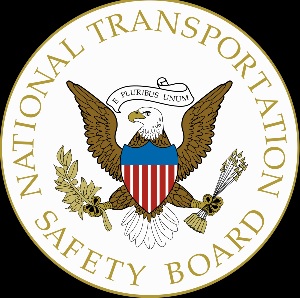
Distracted Driving Top Priority For NTSB
January 21, 2015
The National Transportation Safety Board ( NTSB ) has come out with its list of top safety priorities and, given the nature of the agency’s work, the top pick may be a bit surprising but, for safety experts, it shouldn’t be a surprise at all.
The NTSB is the federal agency known by most Americans as the agency that investigates aircraft crashes and, most often without any living witnesses, are tasked with finding the cause of the crash. However, the NTSB’s mission isn’t limited to aircraft incidents. The NTSB’s mission is to ensure the safety of any type of transportation including; aircraft, ships, trains, and motor vehicles.
It’s the motor vehicle side side of the NTSB’s work that that is drawing the most attention in this year’s list of top priorities. The top item among their list of safety priorities for 2015 is distracted driving.
According to the website Distraction.gov:
- 3,328 people were killed in distraction-affected crashes in 2012.
- An estimated 421,000 people were injured in motor vehicle crashes involving a distracted driver, this was a nine percent increase from the estimated 387,000 people injured in 2011.
- At any given daylight moment across America, approximately 660,000 drivers are using cell phones or manipulating electronic devices while driving, a number that has held steady since 2010.
- Five seconds is the average time your eyes are off the road while texting. When traveling at 55 mph, that’s enough time to cover the length of a football field blindfolded.
To compare; worldwide, there were 459 fatalities as a result of aircraft related incidents in 2013 according to the Geneva-based Bureau of Aircraft Accidents Archives. In 2013 the US had a total of 224 aircraft related fatalities including those aboard the aircraft and people on the ground.
If the US had experienced an aircraft related fatality rate equal to the number of distracted driving deaths, people would stop flying. It’s no wonder then that the NTSB needs to place its top priority on the problem of distracted driving.
Read more: NTSB 2015 MOST WANTED LIST OF TRANSPORTATION SAFETY IMPROVEMENTS
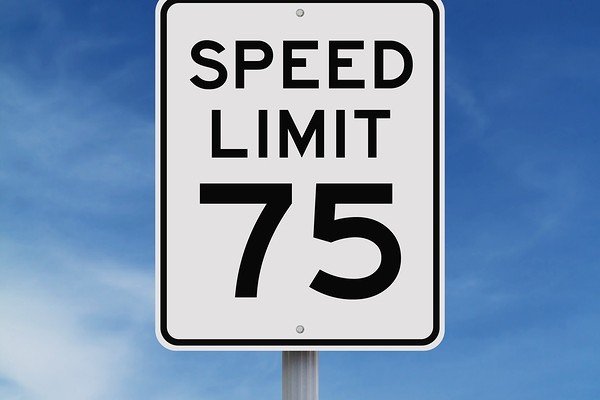
Legislators Seek To Raise Speed Limits
January 16, 2015
It’s that time of year again when state legislatures meet and bills to raise speed limits on interstates and state roads are introduced. Bills are being introduced in several states to raise the speed limit on interstates within the state’s borders up to 75 and even 80 mph. Apparently, the legislators who are pushing for these bills are pandering to constituents who want the speed limits raised without considering the danger posed by those speed limit increases.
In 2011, the State of Kansas increased speed limits to 75 mph on certain highways. According to Kansas Department of Transportation statistics, in the two years following the speed limit increase, the number of deaths on those Kansas highways where the speed limit was raised increased by 54 percent. Injury collisions also increased on those highways by 13 percent compared to the two years before the law change.
The Kansas statistics follow other studies that have found increases in the death rate after speed limits were raised. A 2009 study published in the American Journal of Public Health looked at the death rate on American highways after congress abolished the federal maximum speed limit in 1995. The study found an increase in the death rate of 3.2 percent on all roads, a 9.1 percent increase on rural interstates and a 4 percent increase on urban interstates. What that meant in real numbers were 12,545 deaths and 36,583 injuries that were directly attributed to the increase in speed limits.
In 2006, Iowa’s Department of Transportation conducted a study looking at the death rate in several mid-western states that had raised speed limits compared to states that didn’t. They found an overall fatality increase of nine percent in those states that raised the speed limit compared with a seven percent reduction in the states that hadn’t raised the speed limit.
Higher speed is a problem because it reduces a driver’s time to react to an emergency on the road. Higher speeds also make it more difficult to keep a car on the road on curves or when trying to avoid a crash. Higher speeds also increase the crash forces exponentially. When comparing a crash with a car hitting a stationary object at 70 mph vs the same crash at 75 mph, the difference between 70 and 75 mph represents an increase in speed of only seven percent but an increase of 14 percent in crash forces. According to figures from the National Highway Traffic Safety Administration (NHTSA), speed was responsible for approximately one-third of all highway deaths in 2012.
Some legislators maintain that increased speed limits allow goods to travel to markets faster, saving money and creating a business friendly environment. According to a May 2014 report by NHTSA, crashes involving a speeding vehicle traveling over the posted limit or too fast for conditions cost the nation $59 billion in 2010, an average of $191 for every person in the U.S.
In last year’s legislative session, the Florida legislature passed a bill that would have increased the speed limit on certain Florida highways to 75 mph but after protests from the Florida highway patrol, other law enforcement agencies, and safety experts, the governor vetoed the bill.
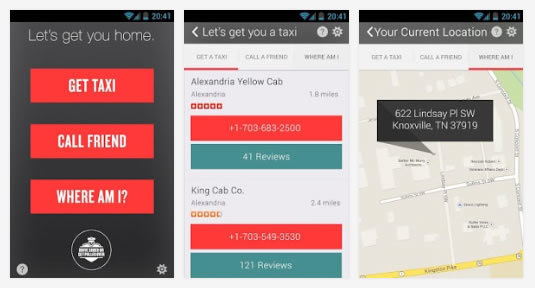
Feds Introduce App To Prevent Drunk Driving
December 19, 2014
In the ongoing effort to prevent drunk driving, the federal government has introduced a new cellphone app. Called “SaferRide”, the app was released by the National Highway Transportation Safety Administration (NHTSA), and is now available for download.
Unlike the ENDUI app released by the State of Maryland, this app doesn’t try to estimate your BAC level or offer reaction testing games. Instead, for anyone who drinks and needs a safe ride home, the app will locate and call a taxi service close to their current location. It can also contain a list of designated driver phone numbers that the user pre-programmed into the app. Continue Reading
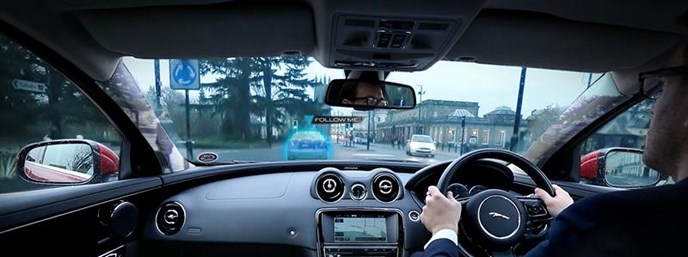
Jaguar Land Rover Proposes Invisible Pillars and Ghost Cars
December 18, 2014
Invisible pillars and ghost cars are a couple of new technologies to make driving safer that are being proposed by Jaguar Land Rover researchers.
Invisible Pillars
To make cars safer and strengthen the roof, pillars between the car’s body and roof had to be widened in order to make them stronger. The problem with that is that, when making turns or checking blind spots, the pillars block the driver’s view of the area around the car. Continue Reading

Drugged Driving Increasing But Hard To Prove
November 25, 2014
The increase in instances of drugged driving has law enforcement and state officials worried throughout the country. With more states either legalizing or decriminalizing marijuana use, police are seeing more instances of drivers under the influence of marijuana. The problem is that it’s hard to prove under many state laws. Continue Reading
